A Halo game without the original Covenant units? Whaaaat?!
Yes, that was my initial reaction. I miss the beautifully designed, original Covenant units and I personally thought they are the highlight of Halo games.
Nonetheless, I was drawn by the blockbuster cinematic cutscenes and Hollywood quality CGI of Halo Wars 2. And since it has been a while since I played a real-time strategy (RTS) game, I thought I should hone my strategic teeth on this.
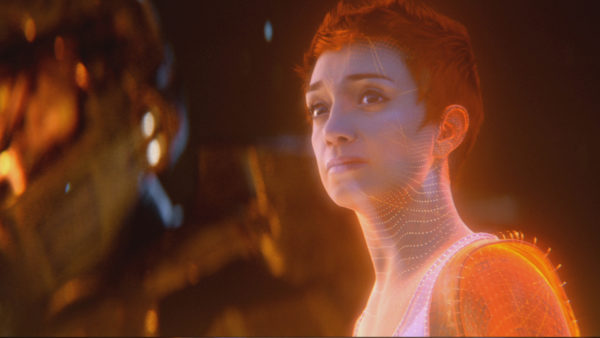
Set in the Halo universe, the Halo Wars series are the RTS counterparts to the more familiar action-heavy first-person shooter (FPS) Halo titles.
The first Halo Wars was released in 2009 for the Xbox and was designed to be played with the console’s controller, which is a rather limited device for controlling RTS games.
Halo Wars 2, released in 2017, continues to uphold the tradition of being an RTS where missions require you to lead troops out on the battlefield, build bases, and churn out units to hold off or destroy enemy troops.
Fight alone
The single-player campaign takes place 28 years after the original Halo Wars, where the human United Nations Space Command (UNSC) starship, Spirit of Fire, escaped the Covenant forces by blowing up a fleet of spacecraft left behind by the Forerunners, who were an ancient alien pioneering race.
Set adrift in space, the crew entered cryo-sleep for 28 years. Halo Wars 2 starts with the crew woken by the ship’s AI to find themselves on a Forerunner installation known as The Ark. There, they encountered a hostile group known as The Banished, a group of ethnic Jiralhanae, who were formerly part of the Covenant empire.
So the story goes like this: The Banished were previously used by the Covenant as dispensable troops, luring them into battle on the pretext of a Holy War. The Banished, who bear a striking resemblance to orcs and goblins of fantasy worlds, are led by a ginormous and ferocious goblin-like character named Atriox.
Atriox, who wields a massive gravity hammer as his weapon of choice, grew weary of being used by the Covenant and became the only individual who had ever rebelled against the Covenant forces.
The premise of the game is pretty interesting, with the Spirit of Fire crew facing off with the orcish Banished hordes but I do miss not kicking the asses of Covenant forces since that, to me, was one of the perks of playing a Halo game.
Sadly, The Banished and Atriox himself lack the good looks and charm of the main Covenant race – see the close up of Atriox below. Not someone I will put up as a poster in my room.
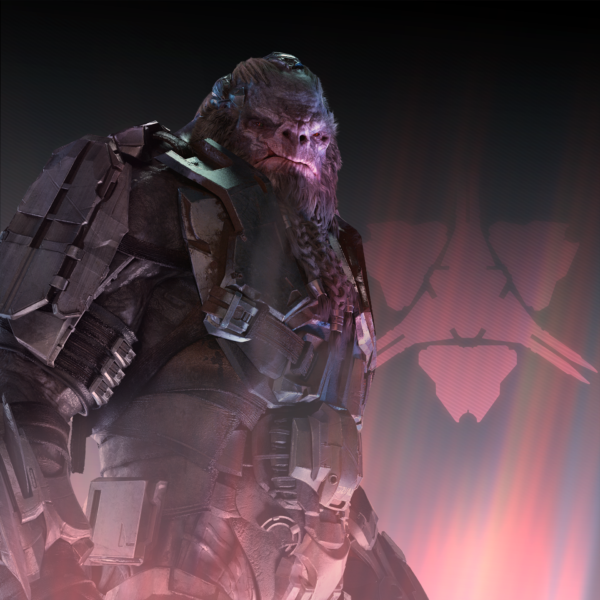
As an RTS, Halo Wars 2 is rather lacking in tactical flexibility as the games has predefined spots on the map for you to build your base, garrison troops and build your turrets.
A base can have one, two or up to six slots for buildings. If you change your mind or have another think about your strategy, you can recycle the slots for placing another building but you will lose time.
Resources come in the form of supplies and power, harvested by Supply Pads and Power Generators. Once the structures are built, your Supply and Power resources will just flow in without requiring units to harvest.
These two resource buildings can also be upgraded for better yields, and there are also standalone generators available for capture on the maps. But without a need to harvest, the resource gathering aspect is much simplified – you cannot slow down your opponent’s growth velocity in gathering resources by destroying harvesting drones.
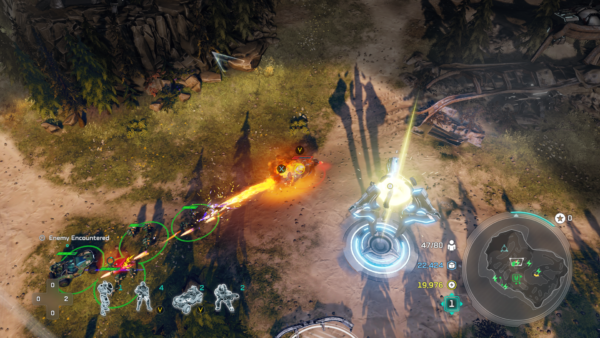
Another limitation is that you cannot change the orientation of the base or the placement of the buildings. Placements of building slots are fixed – you can only choose what buildings to place on the slots but you cannot freely place the buildings anywhere.
Turrets can only be placed at the corners of a six-slot base – smaller bases do not even have turret slots. It is only after you gain the “Drop Turret” leader power that you can order a turret to be placed anywhere on the map, and even so, you need to wait for the leader power to be recharged before you can drop another.
For a “kiasu” (Singlish for overly cautious, fear of losing out) defensive player like me, I would want to build turrets all around the perimeter of my base in RTS games but now I cannot.
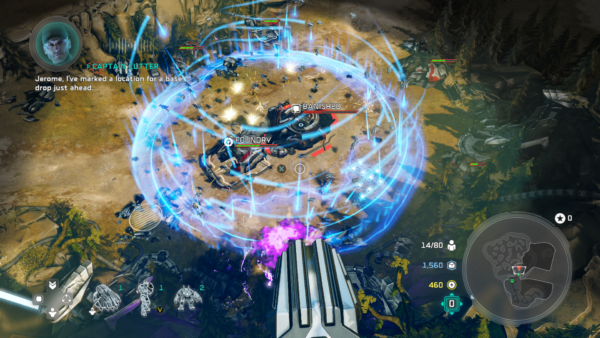
As you complete objectives, destroy enemy units and construct buildings in the game, you will gain leader points to gain Leader Powers – both passive and active. Active powers can be reused once a cooldown period has been reached and can help turn the tide for battles, such as dropping special units, missiles, turrets, or other short-term weapons of mass destruction.
The missions in the single player campaign are typical of RTS games, ranging from tower defense, capture the flag / portal, destroy the bases, and defending against waves of enemies.
Some missions are really quite challenging and give you very little time to churn out your troops before the enemies start swarming you.
However, since the strategic and tactical aspects are quite watered down to make the game more manageable on the console, the gameplay gets repetitive after a few missions.
Skirmish with others
Halo Wars 2 has an extensive multiplayer mode that offers different game types, including Stronghold where players need to build the most strongholds to win, Deathmatch where players needs to destroy all enemy bases, and Domination where players have to capture and hold Control Towers.
Players can find matches with other players online up to 3 versus 3 players, or play versus the AI. The Co-op mode lets you invite a buddy to join you in playing through the single player campaign together or the multiplayer via Xbox Live.
Play your cards right
Other than the Single player campaign and Multiplayer game modes, Halo Wars 2 also has a Blitz mode, a Collectible Card Game (CCG) concept similar to Hearthstone. Here, you use cards to spawn troops, powers or boosts in the field.
Before the game begins, you select your deck of card, but the challenge comes in the form of you not being able to control the order of the cards that will show up for you to use. Cards can be purchased with real money or you can get card drops while playing through the single player campaign.
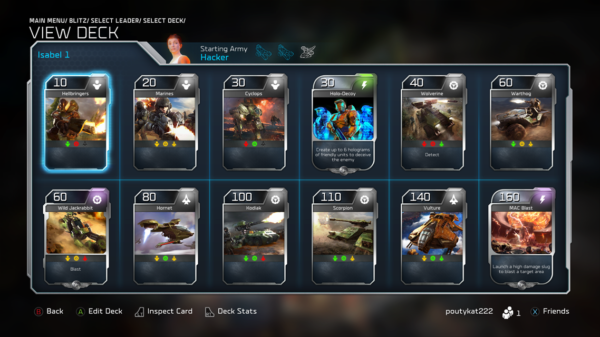
Sight and Sound
Halo Wars 2 has Hollywood-quality cinematics and great acting prior to each mission, but a lot of the story is also told through the action sequences and talking heads during the missions which are rendered in-game, which is not as spectacular as the CG cinematics.
Voice acting and musical score are also top notch, worthy of a blockbuster film. In-game graphics are peppered with colourful and satisfying explosion, and the water effects are pretty too.
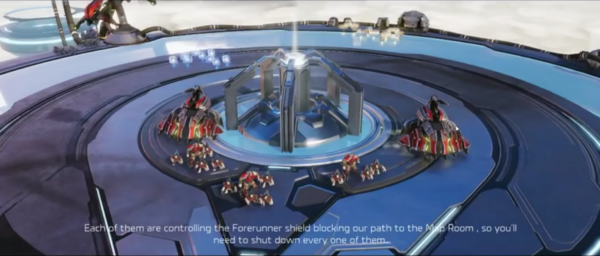
If you like to read more in depth about the back story, the Phoenix Logs you pick up during the single player campaign will provide you plenty of additional background into the game.
TL;DR
Despite a good variety of missions, Hollywood quality cinematics and an action-packed story, a true RTS fan will find it rather limiting.
With the simplified strategic gameplay and the lack of freedom of building and turret placements, Halo Wars 2 might be more suitable to newbies or console gamers, while hardcore RTS fans will find the limitations of tactical and strategic gameplay frustrating.
Having the Blitz card game mode is a bonus, though I feel that it downplayed the importance of tactics and relied more on luck for victory. Of course, I also miss the original Covenant units too, but it’s nice to play the familiar UNSC troops such as the Warthogs and Spartans.
Halo Wars 2 is an Xbox Play Anywhere title, and can be played on the Xbox One console as well as Windows 10 on your PC (yaay!). Halo Wars 2 is available at S$69.90 for the Standard Edition, and the Ultimate Edition with the season pass and Halo Wars 2: Def, a remake of the classic Halo Wars, at S$89.90.






